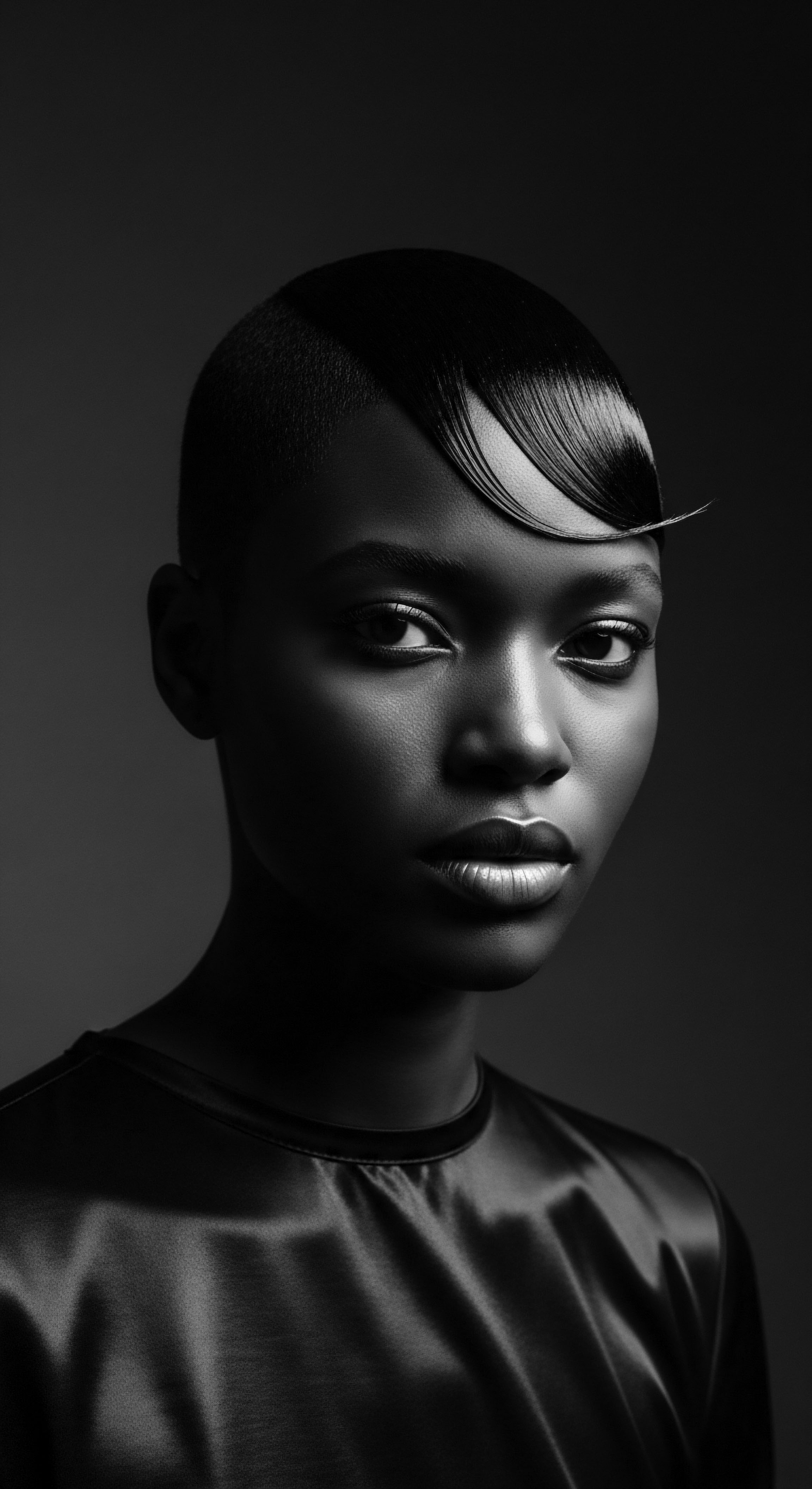
Fundamentals
The Nile Valley Hair Culture, at its foundational interpretation, represents a profound lineage of hair care practices, aesthetic principles, and communal expressions originating from the ancient civilizations cradled by the fertile banks of the Nile River—primarily ancient Egypt and Nubia . It is a testament to the ingenuity and deeply held values of these ancestral communities, whose relationship with hair transcended mere adornment, becoming a powerful marker of identity , social standing, spiritual connection, and health. The earliest records from this region illuminate a sophisticated understanding of hair biology and its multifaceted role in human existence.
This cultural framework for hair is rooted in elemental biology, recognizing that hair, in its myriad forms, demanded particular attention for both preservation and presentation. From the earliest dynastic periods, archaeological discoveries reveal tools and substances meticulously crafted for cleansing, conditioning, and styling hair. These artifacts speak volumes about a civilization that placed immense significance on personal grooming, not solely for individual beauty but as a reflection of societal order and spiritual purity. The warm, dry climate of the Nile Valley, moreover, necessitated practices that protected the scalp and strands from environmental rigors, giving rise to methods that are still remarkably relevant today.

Ancestral Foundations of Hair Care
The foundational practices of Nile Valley Hair Culture began with a recognition of hair’s innate vitality. Cleanliness was a paramount concern, reflected in the discovery of early forms of soap and water-based washing rituals. Beyond hygiene, the people of the Nile understood the need for substances that would protect and nourish the hair.
Animal fats, plant oils, and resins were commonly employed, serving as emollients and styling aids. These early cosmetic innovations underscore a keen observational approach to the natural world and its gifts.
The Nile Valley Hair Culture is a living legacy, beginning with simple yet potent ancestral practices for hair nourishment and styling.
For communities along the Nile, hair was rarely left in a purely unaltered state. It was a canvas for creativity, meticulously braided, twisted, or coiled. These manipulations were not merely stylistic whims; they served practical purposes of maintenance and protection, while simultaneously communicating intricate social codes. From the simple practicality of securing long hair to the elaborate creation of wigs and extensions, every gesture spoke of intentionality and a reverence for hair as a vital aspect of the self.
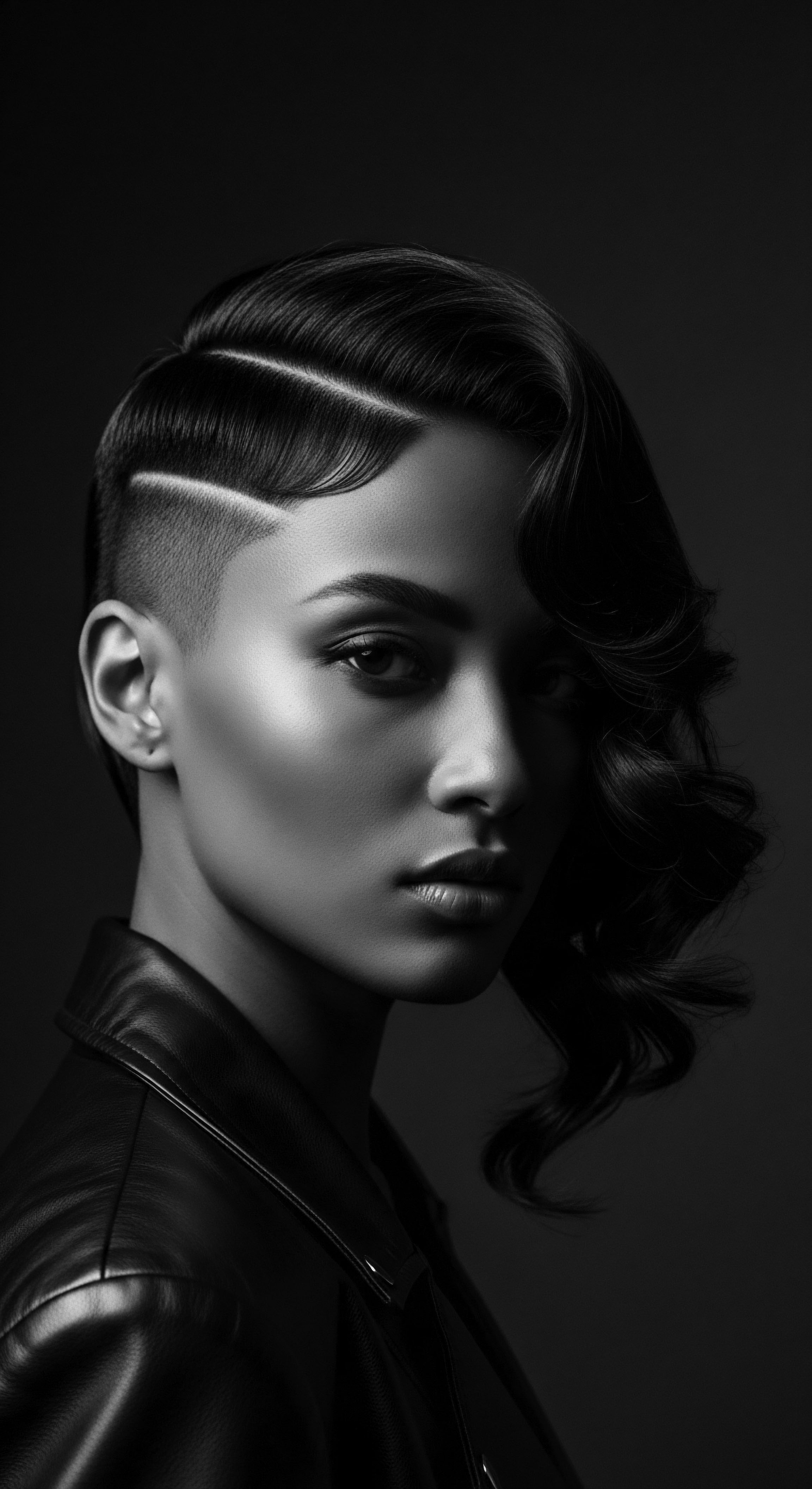
Early Implements and Ingredients
The tools of ancient Nile Valley hair care were both practical and often beautifully rendered. Combs, for instance, crafted from bone, ivory, or wood, displayed varying tooth widths, suggesting an adaptation to diverse hair textures. Hairpins, razors, and even early forms of curling tongs have been unearthed, indicating a rich array of styling techniques. The ingredients used were drawn directly from the surrounding environment, highlighting a harmonious relationship with nature.
- Natural Oils ❉ Castor oil, moringa oil, and various animal fats were used to moisturize and add luster to strands.
- Henna ❉ This plant-based dye imparted a reddish hue, often employed to conceal graying hair.
- Resins and Waxes ❉ Beeswax and plant resins acted as fixatives for intricate styles and wigs.
- Pumice Stones ❉ Utilized for gentle exfoliation of the scalp during cleansing routines.

Intermediate
Moving beyond the foundational elements, the intermediate understanding of Nile Valley Hair Culture deepens into its societal integration, the complex meanings woven into each style, and the communal rituals that surrounded hair care. This broader view reveals hair not as an isolated biological feature, but as a dynamic cultural signifier, an instrument of communication, and a conduit for shared ancestral wisdom. The practices evolved, reflecting social stratification, religious beliefs, and artistic sophistication, yet consistently upheld hair’s central significance.
Within the ancient Egyptian and Nubian realms, hair care transcended individual vanity, forming a public expression of one’s place within the collective. Elaborate styles and their accompanying adornments often communicated personal status, occupation, age, and even marital standing. The creation and maintenance of these styles were frequently communal affairs, fostering bonds and transmitting generational knowledge. This shared experience underscored the importance of hair as a medium through which community ties were strengthened and cultural narratives perpetuated.
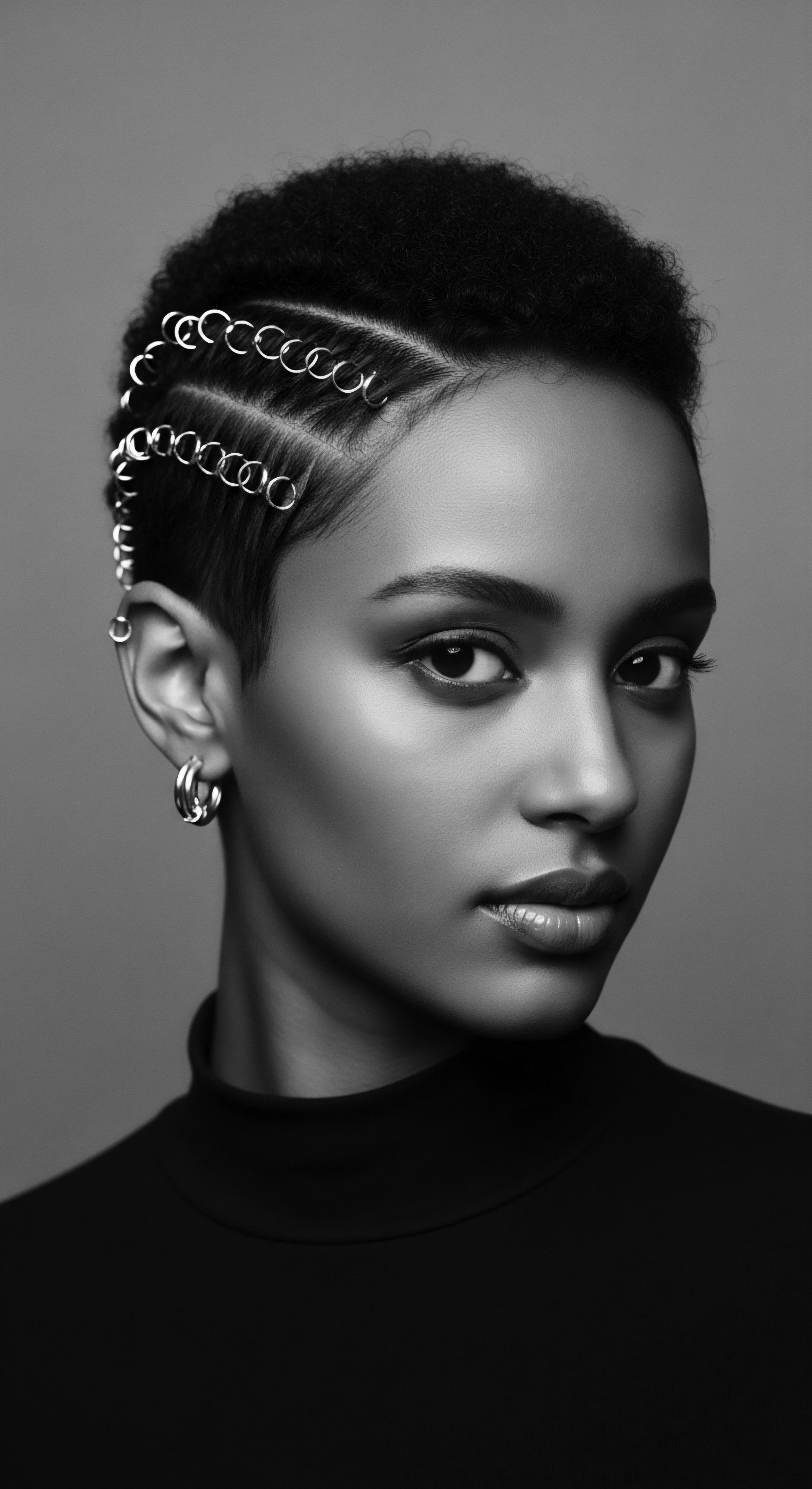
The Tender Thread of Tradition and Community
The rhythmic actions of braiding, coiling, and adorning hair cultivated a tender thread of tradition that connected individuals to their lineage. These were often multi-generational practices, passed from elder to youth, carrying with them not only techniques but also stories, songs, and ancestral philosophies. The act of tending to another’s hair became a quiet, profound ritual of care, transmitting unspoken lessons about beauty, patience, and belonging.
Ancient Nile Valley hair practices were communal acts, strengthening bonds and transmitting generational wisdom.
Beyond the family unit, skilled hairdressers and wigmakers held revered positions within society. They were artisans of appearance, crafting intricate designs that fulfilled both aesthetic desires and social expectations. Their expertise speaks to a society that valued specialized knowledge and the artistry involved in hair manipulation. Even the materials used, from human hair for wigs to precious metals and stones for adornments, reflect a sophisticated economy and an appreciation for resources that could elevate hair presentation.

Stylistic Complexity and Symbolism
The complexity of hairstyles in the Nile Valley was remarkable, ranging from tightly bound braids and locs to voluminous wigs and extensions. These styles carried symbolic weight, often reflecting religious iconography or power structures. For instance, certain braided patterns might have evoked natural forms, while the ‘Nubian wig,’ characterized by its short, bushy appearance with rows of curls, was admired and adopted by Egyptian elites, including Queen Nefertiti, mimicking the styles worn by Nubian communities. This exchange speaks to the interconnectedness of cultures along the Nile.
Consider the variations in presentation across different periods ❉
- Old Kingdom (c. 2686–2181 BCE) ❉ Simpler, shorter styles were common, with men often clean-shaven or wearing short hair, and women sporting chin-length bobs. Even in this era, wigs served as a protective measure against lice and sun.
- Middle Kingdom (c. 2055–1650 BCE) ❉ Hairstyles grew in length and complexity. Women frequently wore shoulder-length styles or elaborate tripartite wigs with three distinct sections.
- New Kingdom (c. 1550–1070 BCE) ❉ This period saw the zenith of elaborate wig use and diverse styling. Men wore voluminous wigs with layers of curls and braids, while women’s wigs could be exceptionally ornate, adorned with beads, gold, and scented cones.
The table below provides a comparative view of general hair care practices, highlighting their continuity and evolution ❉
| Aspect of Care Cleansing Agents |
| Early Dynastic (c. 3100-2686 BCE) Natura l sodas (natron), plant ashes mixed with water. |
| New Kingdom (c. 1550-1070 BCE) Alkaline salts from Wadi El Natron; early forms of soap. |
| Aspect of Care Conditioning |
| Early Dynastic (c. 3100-2686 BCE) Animal fats, castor oil. |
| New Kingdom (c. 1550-1070 BCE) More refined plant oils (e.g. fir, almond, rosemary) and compounded unguents. |
| Aspect of Care Styling Aids |
| Early Dynastic (c. 3100-2686 BCE) Basic fats and resins for setting. |
| New Kingdom (c. 1550-1070 BCE) Sophisticated fat-based gels, beeswax, and plant resins. |
| Aspect of Care Hair Adornment |
| Early Dynastic (c. 3100-2686 BCE) Bone or ivory combs, simple hairpins. |
| New Kingdom (c. 1550-1070 BCE) Elaborate gold ornaments, beads, intricate combs, and scented cones. |
| Aspect of Care These practices underscore a sustained dedication to hair health and aesthetic expression across millennia. |
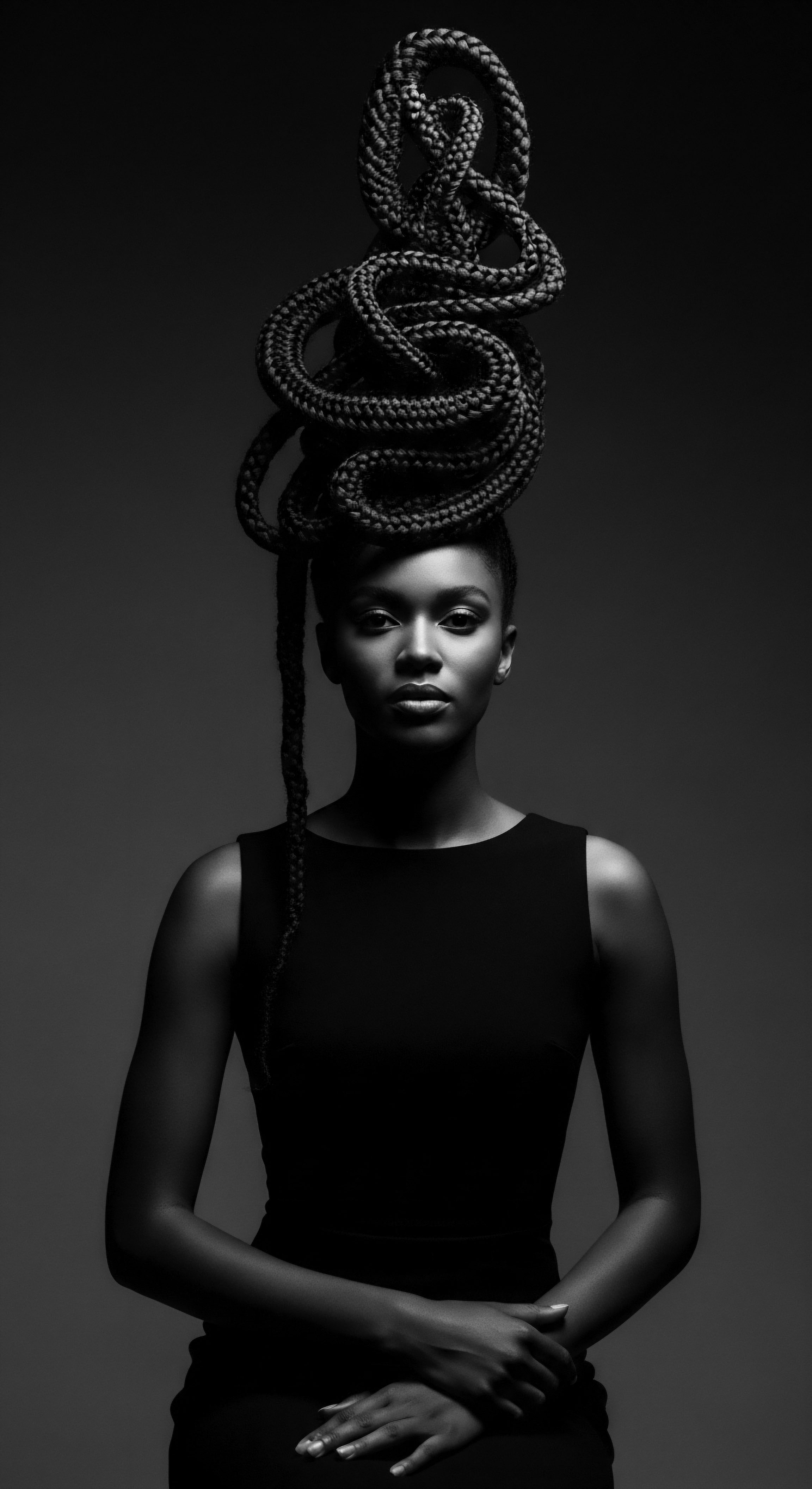
Academic
The Nile Valley Hair Culture represents a comprehensive system of knowledge, practices, and material culture surrounding human hair within the ancient societies of Kemet and Nubia. Its significance extends beyond superficial aesthetics, penetrating the very foundations of socio-religious structuring, environmental adaptation, and physiological understanding. This sophisticated tradition offers a compelling lens through which to comprehend the profound connection between bodily presentation and the intricate tapestry of human experience, particularly as it relates to textured hair heritage and the experiences of Black and mixed-race communities throughout history.
The meaning inherent in Nile Valley Hair Culture is a layered phenomenon, encompassing both the overt statements of status and the subtle, enduring echoes of ancestral wisdom concerning self-care and communal identity. It is an interpretation of hair as a living, expressive extension of self and community, rather than a mere appendage.
Scholarly examination of the Nile Valley’s trichological legacy mandates an interdisciplinary approach, drawing from archaeology, anthropology, chemistry, and art history to delineate its full scope and implications . Ancient texts and iconography provide invaluable insight into prescribed beauty standards and ritualistic uses of hair, while preserved hair samples from mummies allow for direct scientific analysis of hair structure, condition, and the chemical composition of applied substances. This dual investigative pathway affirms the nuanced understanding ancient inhabitants held regarding hair’s biological properties and its cultural functions. For example, forensic analyses of ancient Egyptian hair samples, as documented by Strouhal (1971), revealed cross-sectional indices typically ranging between 35 and 65.
This measurement falls squarely within the range characteristic of curly, African-type hair , offering a direct scientific affirmation of the prevalence of textured hair within these populations (Strouhal, 1971). Such findings are pivotal, challenging older, often Eurocentric interpretations of ancient Egyptian physiognomy and strengthening the authentic connection to Black and mixed-race hair experiences.

Echoes from the Source ❉ Hair Biology and Ancient Science
The inherent qualities of textured hair—its strength, versatility in coiling, and ability to hold intricate patterns—were not merely accepted but actively honored and amplified within Nile Valley aesthetics. The observation that varying hair types responded differently to treatments would have informed the selection of specific emollients, styling techniques, and even tools. The wider-toothed combs unearthed from ancient sites, often described as “Afro picks,” provide an archaeological correlate to the presence of textured hair, illustrating how tools were specifically adapted for its unique characteristics. This represents an early, intuitive form of cosmetic science, born from direct observation and generational trial.
Nile Valley inhabitants demonstrated an intuitive grasp of hair science, tailoring care to diverse textures through carefully selected materials and tools.
The delineation of hair care in the Nile Valley extended to preventative measures. The widespread practice of shaving heads and wearing wigs, often explained as a response to lice infestations and the harsh climate, highlights a practical understanding of hygiene and scalp protection. These choices were not about rejecting natural hair but rather about managing it effectively and artistically, ensuring both health and aesthetic presentation. The wigs themselves, crafted from human hair and sometimes even horse hair, were engineering marvels, designed to mimic or enhance natural texture while offering a protective barrier.

The Chemistry of Ancient Hair Fixatives
A fascinating example of this early scientific understanding is the discovery of ancient hair fixatives. Chemical analyses conducted by Natalie McCreesh and her colleagues at the University of Manchester, published in the Journal of Archaeological Science in 2011, identified a fat-based substance coating the hair of numerous mummies from the Dakhleh Oasis and other sites. This substance, comprising biological long-chain fatty acids such as palmitic and stearic acid, was interpreted as a styling product, akin to a modern “hair gel,” used during life to set intricate hairstyles. This finding provides direct empirical evidence of the sophisticated cosmetic chemistry employed in the Nile Valley, validating the ancestral practices that maintained elaborate coiffures through the centuries.
The implications of the McCreesh et al. (2011) study are far-reaching. The presence of this fatty coating on both naturally preserved and artificially mummified individuals suggests its widespread use as a beauty product rather than solely an embalming agent. This clarification deepens our understanding of daily life in ancient Egypt, demonstrating a societal value placed on maintaining specific hair aesthetics not only in life but also in the journey beyond.
It also speaks to an early comprehension of material properties—how certain fats could provide hold without excessive rigidity, allowing for sculpted styles to endure. This early explication of hair product formulation provides a powerful link between ancestral ingenuity and contemporary cosmetic science.
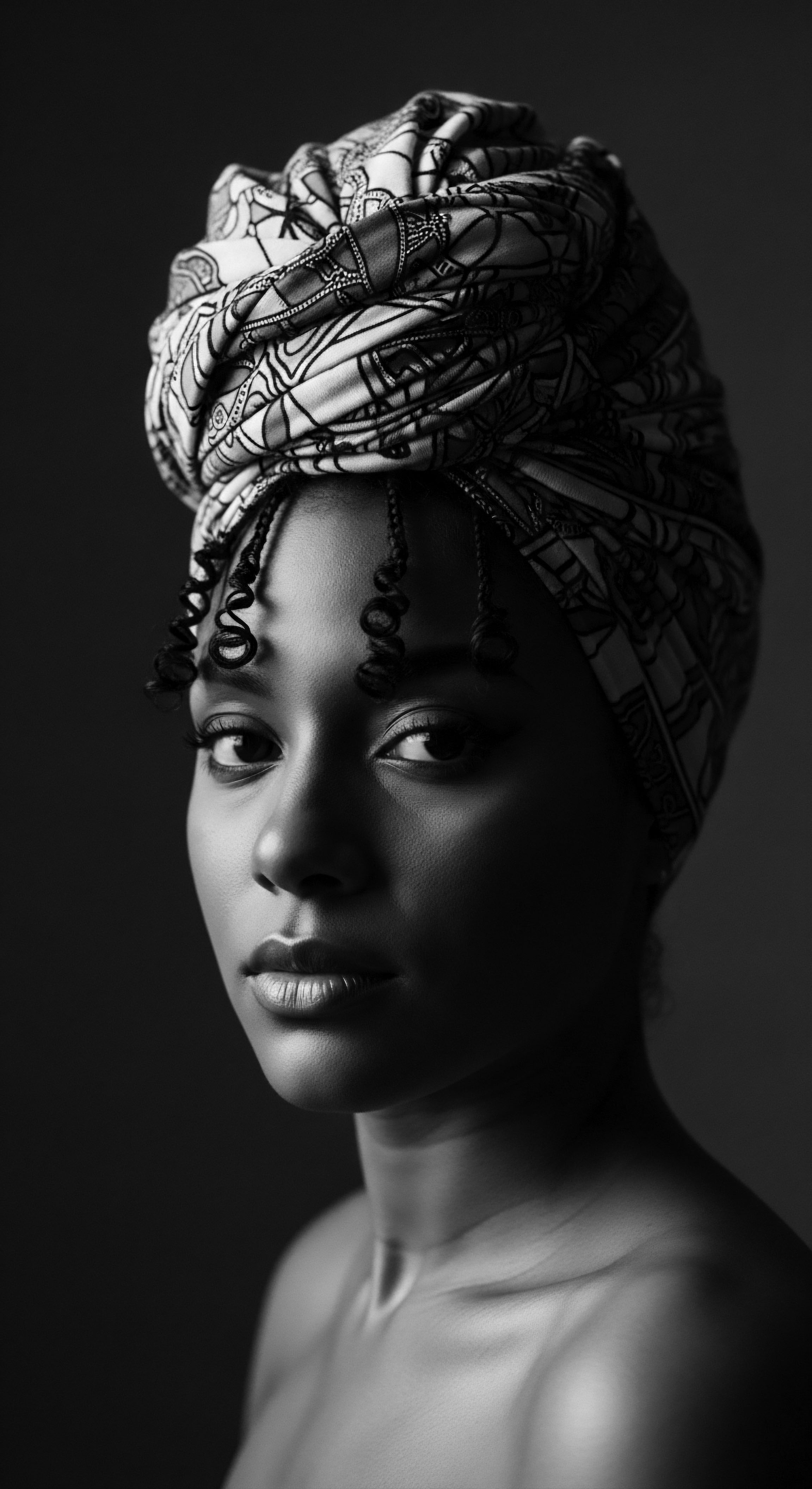
The Unbound Helix ❉ Identity, Status, and Spiritual Expression
The Nile Valley Hair Culture was a powerful medium for expressing and negotiating identity. Hairstyles functioned as a visual lexicon, communicating nuanced information about an individual’s social standing, familial lineage, age, gender, and even religious affiliations. The “lappet hairstyle,” a style consisting of layered locs, for example, was prominently worn by Nubian dignitaries, demonstrating its cultural significance and its eventual influence on Kemetic aesthetics. This illustrates how hair served as a dynamic billboard of self within the social fabric.
Beyond personal identification, hair held deep spiritual significance. The elaborate rituals surrounding hair, from offerings of braided locks in tombs to the symbolic purity associated with shaved heads for priests, underscore its sacred dimension. Hair was perceived as a conduit for spiritual energy, a part of the body that connected the individual to the divine and the ancestral realm. The attention paid to preserving hairstyles in death, often with specific fat-based products, speaks to the belief that one’s identity, including their coiffure, persisted into the afterlife.

Long-Term Consequences and Lasting Heritage
The long-term consequences of the Nile Valley Hair Culture extend into the present day, influencing textured hair traditions across the African diaspora. The intricate braiding techniques, the use of natural oils and butters for conditioning and styling, and the conceptualization of hair as a profound marker of identity—all bear the undeniable imprint of these ancient practices. These are not mere historical curiosities but rather enduring ancestral practices that continue to shape Black and mixed-race hair experiences.
The continued presence of certain hair tools, like the “Afro comb” with its wide-spaced teeth, from ancient Egyptian burials to contemporary use, provides tangible evidence of a unbroken lineage of care. This historical continuity is a testament to the effectiveness and cultural resonance of these ancient methods, transcending millennia. The cultural connotation of hair as a source of pride, resistance, and connection to heritage within Black communities finds deep historical roots in the Nile Valley. This continuous thread of hair knowledge and its associated practices offers an empowering statement for those seeking to understand their textured hair within a broader historical context.
| Symbolic Aspect Status & Hierarchy |
| Ancient Nile Valley Interpretation Elaborate wigs, adornments, and complex styles denoted wealth, rank, and official position. |
| Relevance to Textured Hair Heritage Historical marker of dignity and resistance in the face of oppression; reclaiming cultural pride. |
| Symbolic Aspect Hygiene & Purity |
| Ancient Nile Valley Interpretation Shaving heads, wig use, and routine cleansing countered lice and heat. |
| Relevance to Textured Hair Heritage Foundational principle for health-centered approaches to natural hair care. |
| Symbolic Aspect Spiritual Connection |
| Ancient Nile Valley Interpretation Hair as a link to ancestors, deities; funerary hair rituals. |
| Relevance to Textured Hair Heritage Hair as a sacred aspect of self, connected to ancestral energies and wisdom traditions. |
| Symbolic Aspect Communal Identity |
| Ancient Nile Valley Interpretation Shared styling practices, regional variations, adoption of styles (e.g. Nubian wig). |
| Relevance to Textured Hair Heritage Hair as a bond within Black/mixed-race communities; a shared cultural language. |
| Symbolic Aspect The symbolic depth of Nile Valley hair culture continues to echo in modern interpretations of textured hair. |

Reflection on the Heritage of Nile Valley Hair Culture
To consider the Nile Valley Hair Culture is to embark on a journey through time, tracing a continuous lineage of reverence for hair that remains deeply resonant for individuals with textured hair today. It is a heritage that speaks not only of ancient techniques and opulent displays but also of a profound understanding of hair as an integral part of one’s being—a living fiber connected to ancestral wisdom and a vibrant tapestry of community. The whispers from ancient Kemet and Nubia remind us that care for our strands is an inherited ritual, a dialogue between past and present.
This cultural legacy underscores that textured hair, in its glorious coils and intricate patterns, has always possessed a profound beauty and versatility. It dispels any notion of hair as merely a biological given, elevating it to a medium of artistry, a testament to resilience, and a silent, yet powerful, narrator of cultural identity. The practices of moisturizing, styling, and protecting hair, so prevalent millennia ago along the Nile, echo in the conscious care routines adopted by Black and mixed-race communities worldwide, affirming an unbroken chain of knowledge and love for our hair.
As we look upon the depictions of braided coiffures, elaborate wigs, and carefully treated strands from ancient times, we are invited to see more than historical artifacts. We witness the enduring spirit of individuals who understood hair as a source of strength, a canvas for self-expression, and a vital link to their collective past. This heritage is not a static relic but a dynamic wellspring of inspiration, encouraging us to honor our unique hair narratives and to continue writing the story of textured hair with pride and deep respect. The soul of a strand, indeed, stretches back to the very dawn of civilization along the Nile.

References
- Fletcher, J. (1995). Ancient Egyptian Hair ❉ a study in style, form and function. Unpublished PhD thesis, University of Manchester.
- McCreesh, N. C. Gize, A. P. & David, A. R. (2011). Ancient Egyptian Hair Gel ❉ New insight into ancient Egyptian mummification procedures through chemical analysis. Journal of Archaeological Science, 38(12), 3432–3434.
- Strouhal, E. (1971). Contribution to the Anthropology of Ancient Egypt (with special reference to the hair). Anthropologie, 9(1), 1-13.
- Fletcher, J. (2002). Ancient Egyptian hair and wigs. The Ostracon ❉ Journal of the Egyptian Study Society, 13(2), 2-8.
- Adams, W. Y. (1999). Kulubnarti I ❉ The Cemeteries. University of Kentucky Press.
- Tassie, G. J. (2009). Hair, Identity and Social Status in Ancient Egypt. British Museum Studies in Ancient Egypt and Sudan, 13, 1-15.
- Riefstahl, E. (1956). The Egyptian Wig. Brooklyn Museum Bulletin, 17(2), 1-15.
- Walker, S. & Bierbrier, M. (1997). Ancient Faces ❉ Mummy Portraits from Roman Egypt. British Museum Press.
- Petrie, W. M. F. (1927). Objects of Daily Use. British School of Archaeology in Egypt.
